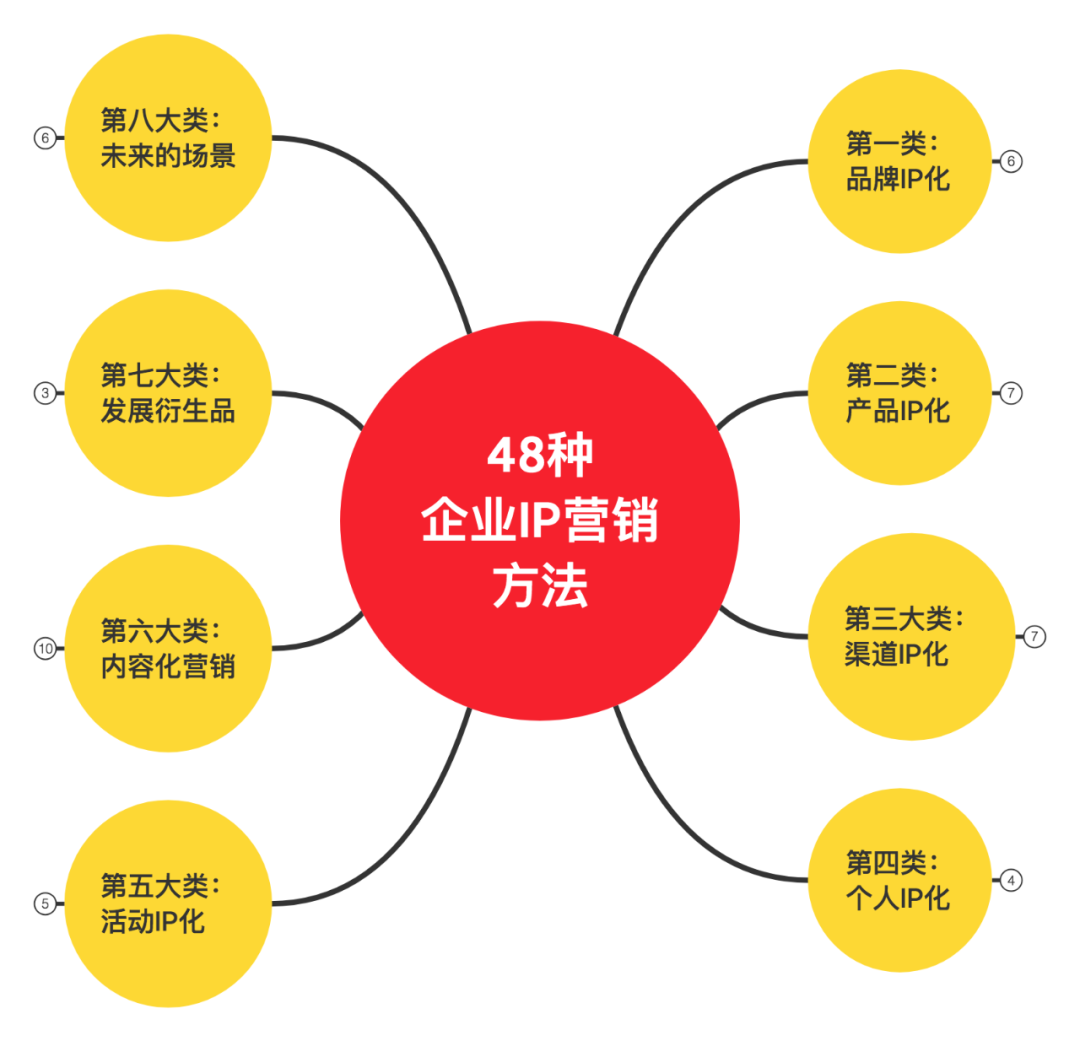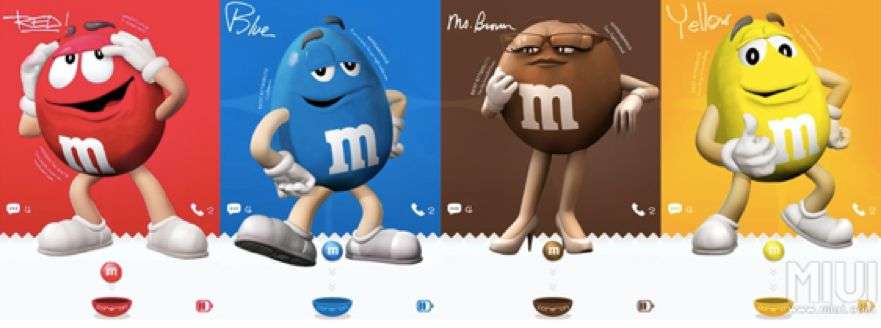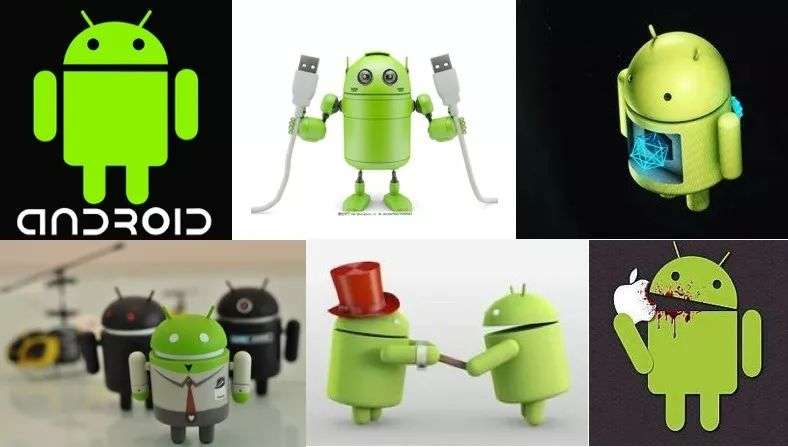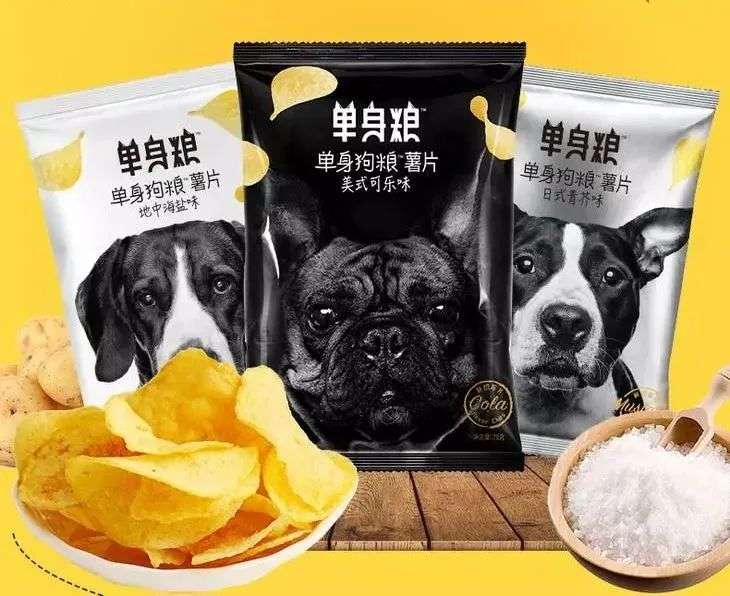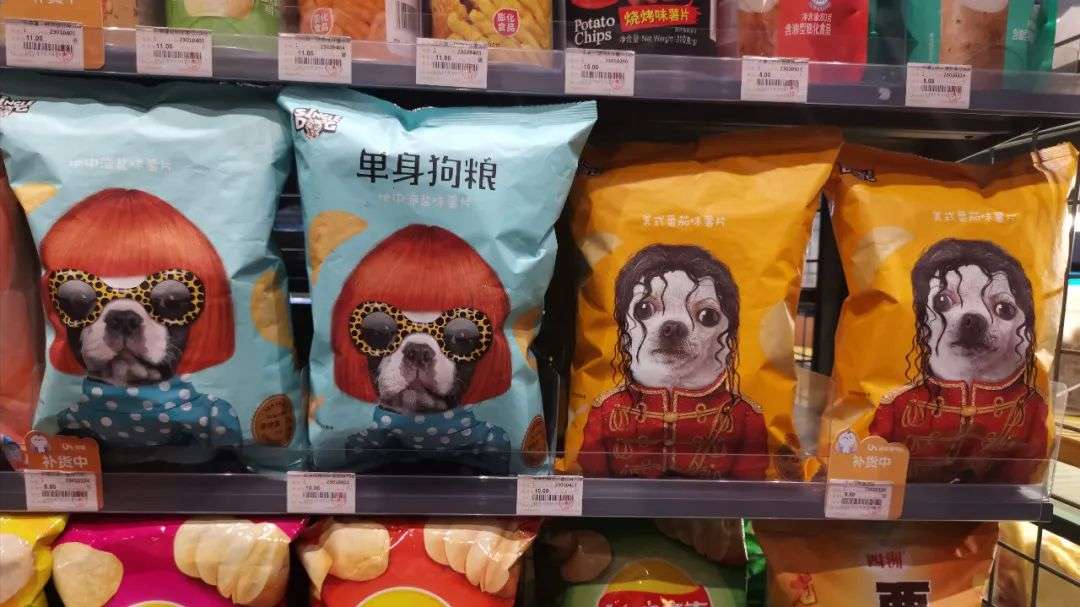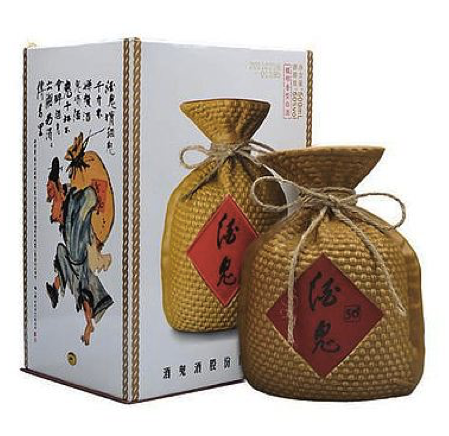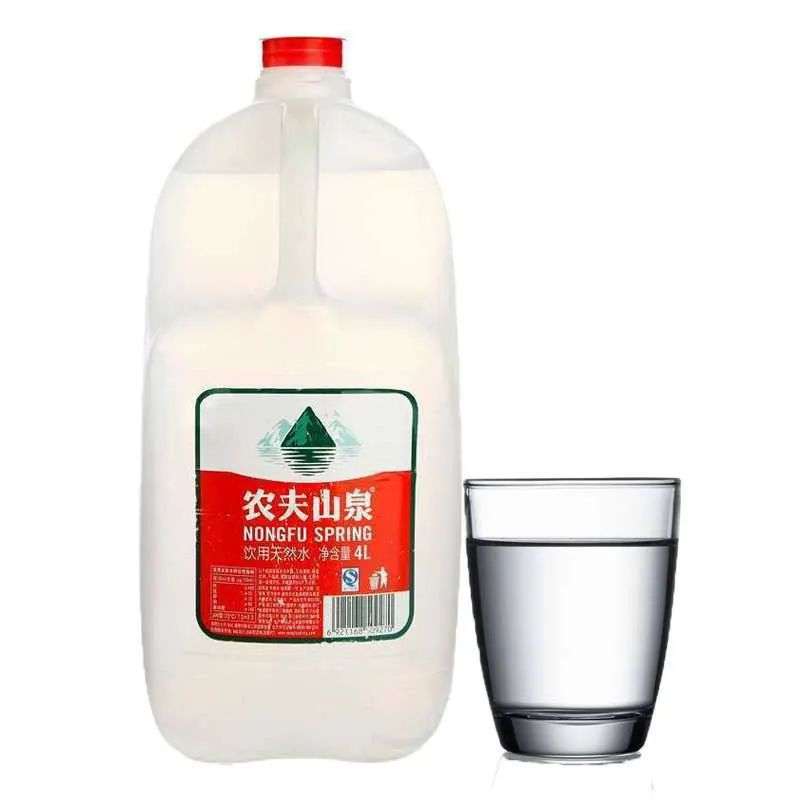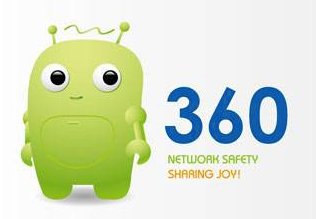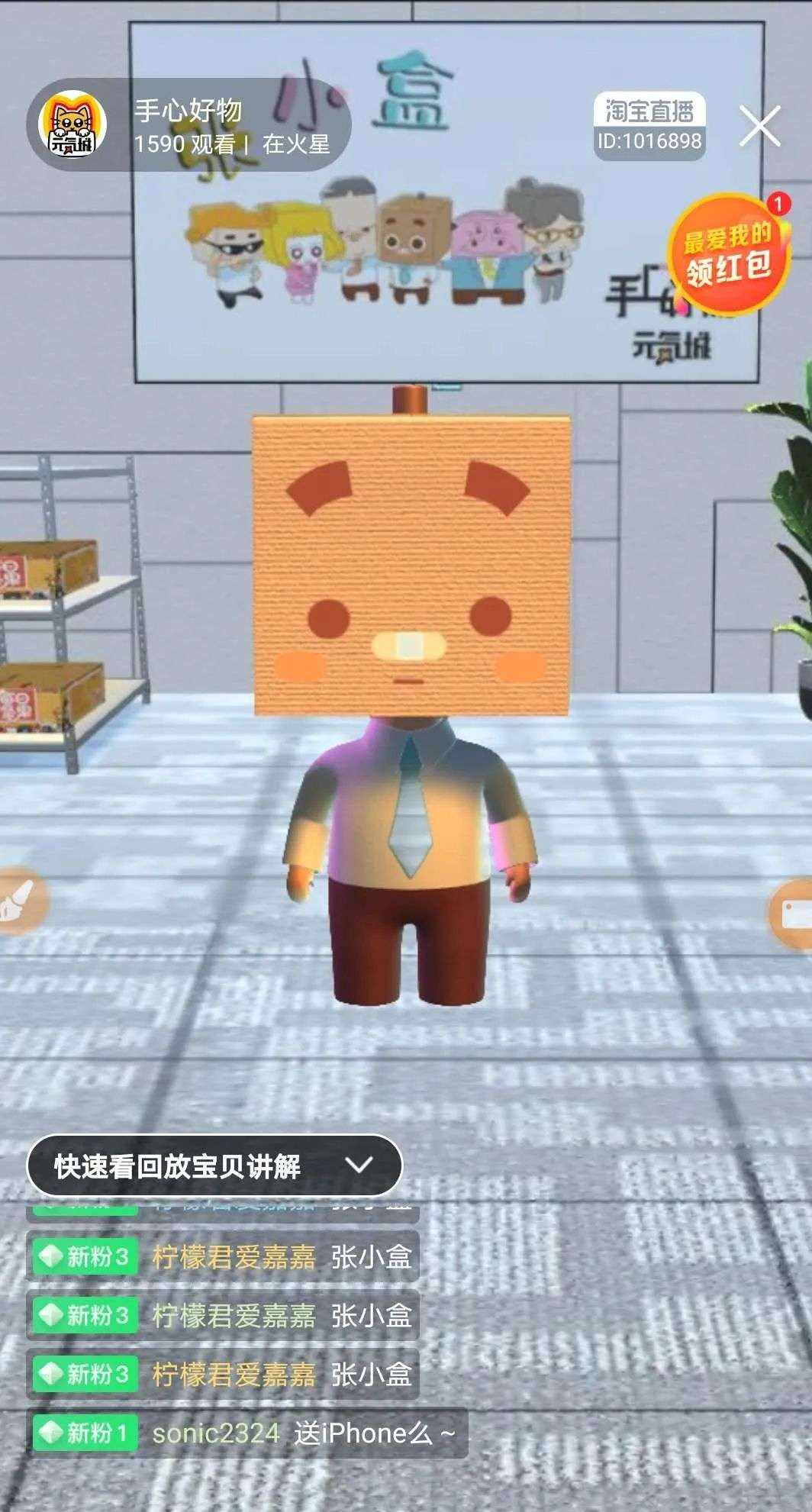To date, the most complete collection and collation of the entire network
Editor’s note: This article comes from the WeChat public account“IP Egg Fried Rice” ( ID: IPCOOK) , author: Mr Gray.
A while ago, there was an article on “Chinese 72 Existing Subcultures” that was very dry.
I am determined to follow suit–completely classify IP marketing. After more than two weeks of hard work, a total of forty-eight enterprise IP marketing methods have been collected and organized, which must be the most complete to date. This article is integrated for your review and convenient use…
IP marketing means that companies inject many IP cultural and creative methods into corporate marketing, which is very useful for networked, fragmented, and stratified markets.
As shown in the figure, it is divided into eight categories, namely: brand IP 6 types, product IP 7 types, channel IP 7 types, personal IP 4 types, event IP 5 types, content marketing 10 kinds, 3 kinds of development derivatives, 6 kinds of future scenes, a total of 48 kinds.
01The first category: IP branding
IP branding in this category refers only to the concept of small brands, not the concept of large brands that covers almost all the behaviors of companies…
1.1 IP-based name
Many people think that making an IP is to create an image. In fact, the most cost-effective, efficient, and easiest and feasible way is to start with the name of the brand or core product.
According to some statistics, the three squirrels are called three squirrels, and they have increased their traffic conversion rate by at least 30% compared with other non-IP-named Taobao brands in the early stages of development.
If Jiang Xiaobai is not called Jiang Xiaobai, early low-cost, non-advertising marketing will be extremely laborious, and the effect of spontaneous communication will also be poor.
For a new brand and a new product, a humanized and vivid IP name is really a multiplier, especially conducive to high-frequency repurchase of consumer products.
In short, IP-based names can be divided into two types –

The monster image is that kind of weird image that can’t tell what it is, but it’s inexplicable.
The reason why I carry it out alone is because the monster image is especially easy to make cute. As Shitada Inuhiko said in “On Cuteness”, cute is often accompanied by grotesque.
Chinese companies basically do not accept the IP image as a monster, so it is difficult to be cute.
This is the world-famous IP image of DOMO Jun, a Japanese NHK TV station. He is a monster, and he is inexplicably cute.
This is M&M’s Chocolate Beanie, which is actually a little monster.
1.5 Robot image
The robot IP image can combine technology, intelligence, humanity, and cuteness, and is suitable for companies with high and new technology.
This is a small Android robot, R2D2 from Star Wars, very popular.
But it’s not easy for robots to do well—because it’s very easy to do well, it needs a very unique design.
As mentioned earlier, brands do not necessarily need to be imaged for IP, and creating a situational scenario is also a good way.
Coca-Cola does not have a fixed IP image, but the brand’s situation is well done, so the brand’s cultural appeal is strong, and the cultural appeal is IP.
The aforementioned MUJI, Smell Library, Wan Chai Pier, Liangpin Shop, etc. are all known for their context.
In the context of contextualization, there are actually IP roles. These IP roles are the consumers themselves, so that consumers are immersed in the context of the brand.
Situational scenes, I will mention and deepen them later.
02Second category: product IPization
This category is product IP, which is actually very easy to mix with the brand IP of the previous category.
The reason why I list them separately is to emphasize the importance of product power. I made this distinction: those who pay more attention to the combination of product value are placed in this category, that is, the combination of essential and real.
2.1 Product contentization
That is, the product is not just a single package, but a carrier of content, which can continuously update the content, which is especially common in FMCG.
The advantage of product contentization is that the product is IP content, which constantly brings new surprises. This not only saves a lot of promotion costs, but also continuously interacts with consumers during the purchase process.
Product contentization requires that the brand behind has a very strong emotional core, otherwise it will be dispersed, so not every brand can do a good job of contentization.
The most representative example is Jiang Xiaobai’s expression bottle, and new quotations are constantly appearing, making the bottle body a serial of content.
So I always think that the essence of Jiang Xiaobai is product IP.
Single dog foods are also frequently changed to achieve product content.
2.2 Product props
Products are not just products, but interesting props.
Props are not the same as pure commodities. Props often have a certain kind of creativity and a certain cultural connotation in them, making people resonate and empathize.
The most classic product prop is the drunk wine bottle designed by Master Huang Yongyu, which is a sack.
The large pot of water in Nongfu Spring is made into an oil barrel, which implies meaning.
2.7 After-sales service IP
The company will make after-sales service more friendly and humanized through visual and scene design.
This is valuable in some companies that need long-term after-sales service, especially technology companies and real estate companies.
03The third category: channel IP
This must be a very important scene in the future. Because the purchase and circulation channels are most directly facing consumers, and all the places that are in direct contact with consumers are worthy of IP.
3.1 IP of live broadcast goods
Live broadcast is the most popular scene now, and it is also the key scene to realize the unity of goods and goods and the unity of products and sales. At least in the next 10 years, a major role will occur.
So companies really need to pay attention to the IP of live broadcasts, or they will always be divided by the outside world’s leading people for the vast majority of profits, or simply lose money to make money.
The IP of live broadcast goods can be either for enterprises to train real people to deliver goods, or for enterprises to create virtual IP to live broadcast goods.
A real person will bring a problem, that is, this real person is unfamiliar and easy to fly alone, unless it is the enterprise leader who brings the goods himself, but this cannot be done every day, only occasionally.
So, cultivating virtual IP for live streaming will gradually become popular, because the anchor will not run away, controllable, and easy to produce IP additional effects.
Now the price of virtual live broadcast has been lowering all the way, and it is completely within the scope of mid-sized companies’ spending power, so cost is not a problem.
The problem is that the image and personal design of the virtual live broadcast will be very different from the IP design of the previous brand image–
Because the virtual live broadcast brings goods, the salesperson the company needs
